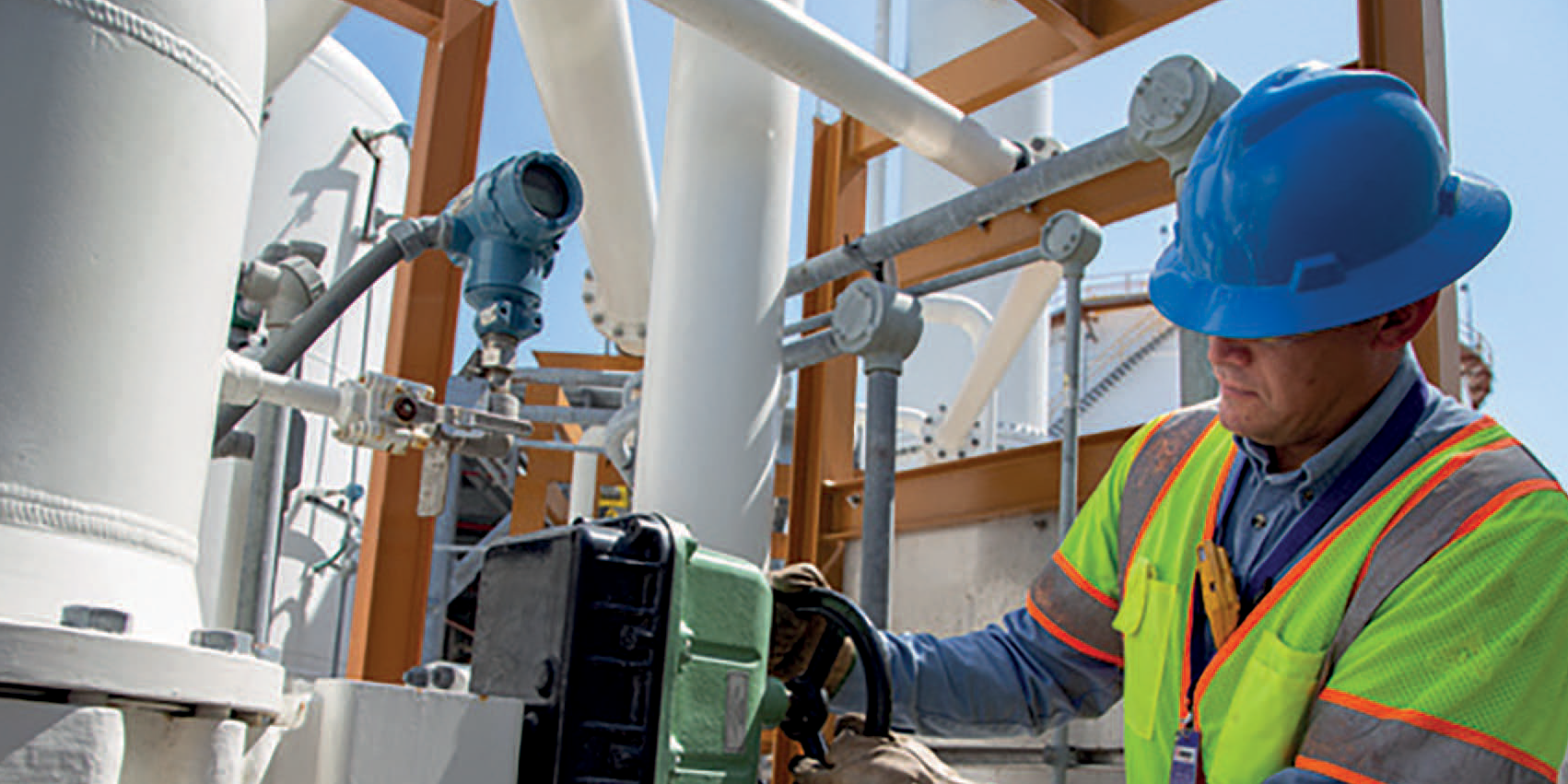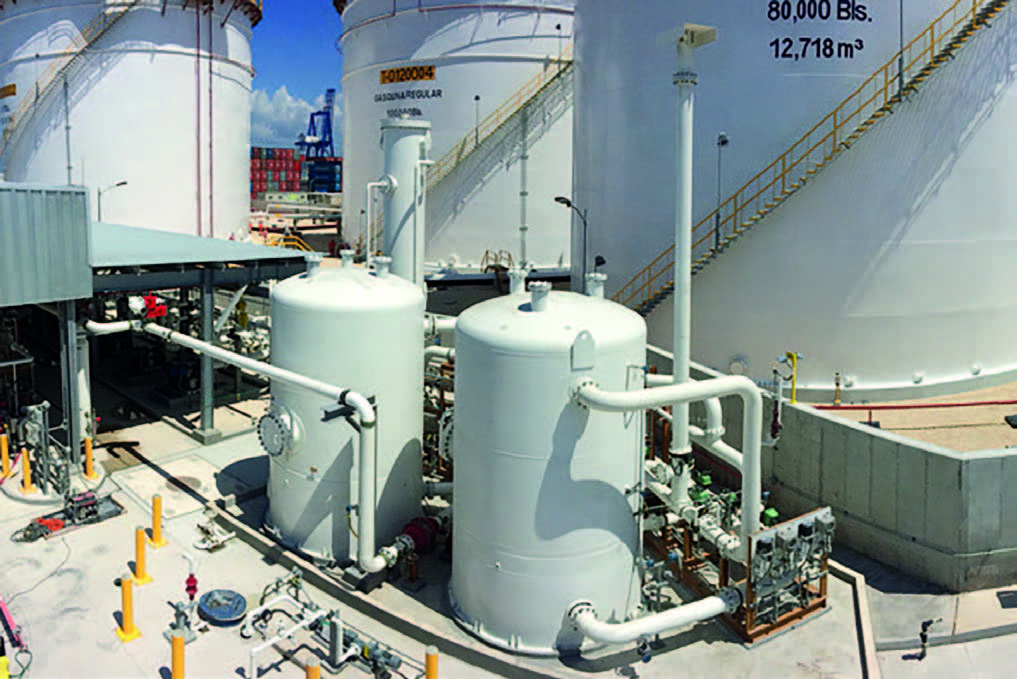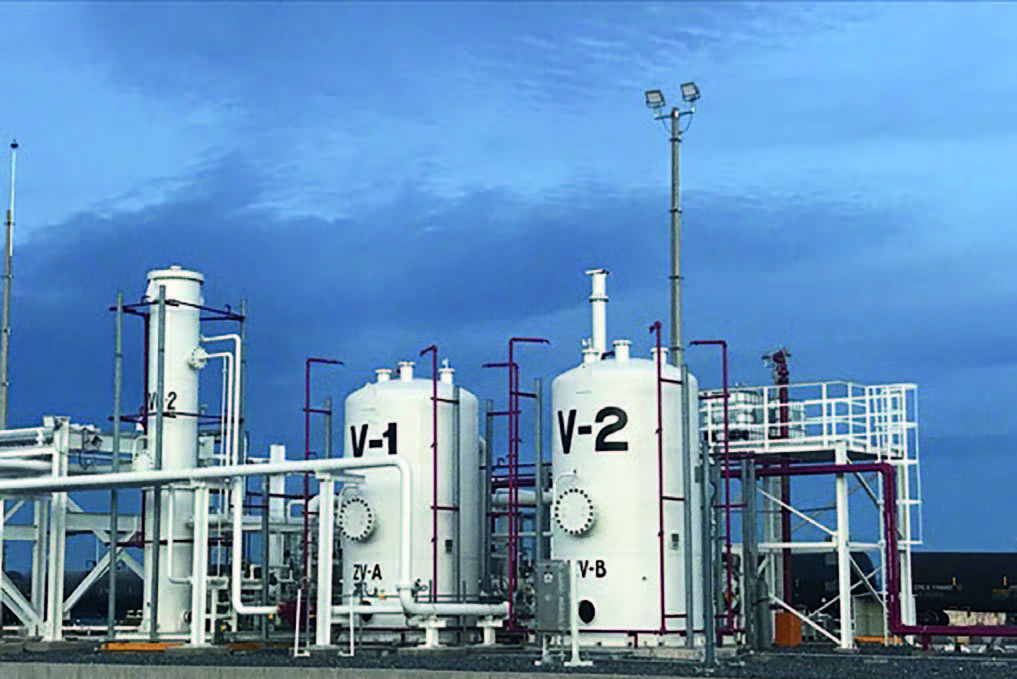Reducing Carbon Footprints and Costs of Operation
CATEGORIES:
Zeeco’s Marty Smith discusses downstream terminal emission control equipment
THE PETROLEUM industry continues to search for ways to reduce operating costs on the downstream terminal level, while still maintaining company cultures and meeting business commitments.
Environmental rules are typically updated each year to drive down emissions, reduce occurrences of spills, and improve the overall safety of operations. While working toward continuous improvement in those areas has been a positive for the industry, it has continued to increase the cost of operations.
Even now, capital expense decisions are being strongly based on environmental social and corporate governance (ESG) thought processes, deciding how to spend limited budget dollars best to provide cost-effective growth for businesses and minimise environmental footprints. Companies wrestling with these topics will want to know how vapour combustion units (VCU) and vapour recovery units (VRU) can impact their success.

Rules and regulations to reduce NOx and CO emissions and increase volatile organic compound (VOC) destruction efficiency are driving the development of a new wave of ultra-low-emission/ high-efficiency VCUs
What's Changed?
Global discussions on reducing carbon footprints have been ongoing for years. This message is beginning to resonate globally in various ways, including the steps many countries are taking to improve the quality of their environment.
Older, inefficient VCUs that produce higher NOx and CO emissions are now scrutinised more closely. Rules and regulations to reduce NOx and CO emissions and increase volatile organic compound (VOC) destruction efficiency are driving the development of a new wave of ultra-low-emission/high-efficiency VCUs. These initiatives often become a balancing act between maximising efficiency and minimising emissions while utilising reliable and easy-to-control technology. Depending on the application, engineers may need to consider the trade-off of running VCUs at higher operating temperatures to increase VOC destruction efficiency versus running at lower temperatures to minimise the assist gas used while maintaining an acceptable VOC destruction level. Proper operating temperature management is crucial to meeting emissions requirements and sustaining VCU reliability and affordability.
Older VCU systems use natural gas or propane to preheat the unit prior to introducing vapours to ensure proper destruction efficiency of the vapours. An inefficient system can burn tremendous amounts of fuel in this scenario. Many of these systems can be retrofitted with temperature control management systems, vapour equalisers, variable speed blowers, or other technology to drive down fuel consumption costs.
Older VRUs also tend to incur higher operating costs. A large number of older VRUs utilise wet vacuum pumps (liquid ring design), require glycol, and have basic control systems that require operator intervention on a nearly 24/7 basis. The wet pumps operate at a constant speed at all times, which consumes more power than newer units that utilise dry technology and can be turned down with a variable frequency drive (VFD) to conserve energy. There is also the cost to maintain and dispose of the waste glycol/ water solutions required by wet systems to consider.
Older VRUs either run 24/7 or are auto-started by loading rack grounding systems that activate when a truck connects to the rack for loading. Continuous operation and constant starts/stops drive up power costs and increase wear and tear on the equipment.
Even with the newer dry technology, regular maintenance is still required to keep equipment operating efficiently and reliably. Since most terminals are not equipped with the workforce or technical capability on-site to complete this, maintenance is typically outsourced or not completed at all. Finding the available downtime and resources to conduct proper maintenance can be challenging, but it is essential. Not completing regular maintenance and simply hoping that equipment keeps running well is a recipe for disaster. Items that could and should have been handled by regular maintenance can grow into catastrophic equipment failures or large environmental issues resulting in significant downtime at the facility.

Developing a Strategy: Learning Better Ways to Structure Operations
Facilities with vapour processing systems miss an opportunity to recover product with a VRU and consequently burn up potential profit each day in their VCU. Many companies are rethinking their strategy and considering adding a VRU as the primary vapour control system to reduce emissions and generate a return on their investment via the VRU’s recovered product.
Other companies with existing VRUs are considering converting to the newer dry technology with special monitoring and smart-starting equipment to reduce operating costs by as much as 30-40%. Additionally, the dry technology results in an increased return on investment as the volume of product returned versus the cost to recover it improves. Based on the current environmental outlook, the value of recovering product as opposed to burning it will only continue to increase with time.
Selecting the Best Option
- Get to know the local environmental jurisdictions, as the level of enforcement often varies from region to region.
- Evaluate the current air permit for the facility and examine how equipment modifications or upgrades will affect its requirements. If these changes do not lead to stricter standards, upgrading equipment to improve the cost of operations and decrease the facility’s carbon footprint may be beneficial.
- Consider converting from a VCU to a VRU. Operators can keep the existing VCU as an active backup for maintenance and emergency downtime.
- If adding a VRU is not feasible due to limited or unavailable space or capital spending funds, consider upgrading an existing VCU. Upgrades may include adding a temperature control system or an equaliser to reduce supplementary fuel usage or changing to more efficient pilots, variable speed blowers, or ultra-lowemission VCU systems.
- If the plant utilises an older, wet VRU, consider replacing it with newer, dry technology. A dry VRU can generate a return on investment in as fast as one to two years, cut a facility’s energy footprint in half, and eliminate waste associated with glycol coolant usage.
- If upgrading a wet VRU to a dry VRU is not feasible due to limited or unavailable capital spending funds, consider doing a retrofit of the system to dry technology and smart-start operations.
- If budgets are too tight to allow an upgrade of the VCU or VRU, consider restructuring the facility maintenance program to allow more time for more extended and intensive maintenance visits. The added time will enable service providers to conduct in-depth evaluations, preventative maintenance, and tuning of the system, which can reduce downtime, and operational costs, increase unit efficiency, and prevent catastrophic failures.
- Companies like Zeeco can provide an annual intensive maintenance program, complete with engineering studies that will inform operators of small changes they can make to reduce their energy footprint. Zeeco can also bring in their expert emissions testing team and help tune systems to peak capabilities.

Build an Alliance: Seek Quality Turkey Solutions
Seek a team who will help provide the best overall strategy to cut costs and lower the facility’s carbon footprint. Finding a partner that is an expert in everything VCU- and VRU-related is key to helping meet these critical goals and requirements.
Zeeco is one of the few equipment providers in this market that can create a turnkey experience. It has the expertise to support companies with air permit reviews, share relationships with local compliance authorities, and do in-person site visits to share the options facilities may have for equipment upgrades or retrofits. Zeeco will not only engineer, manufacture, and deliver a solution, but its Global Field Services team will handle the equipment installation and support the facility with intensive maintenance programs that ensure peak up-time and efficiency.
For more Information:
This article was written by Marty Smith, senior manager for Global Field Services at Zeeco.
Download Article